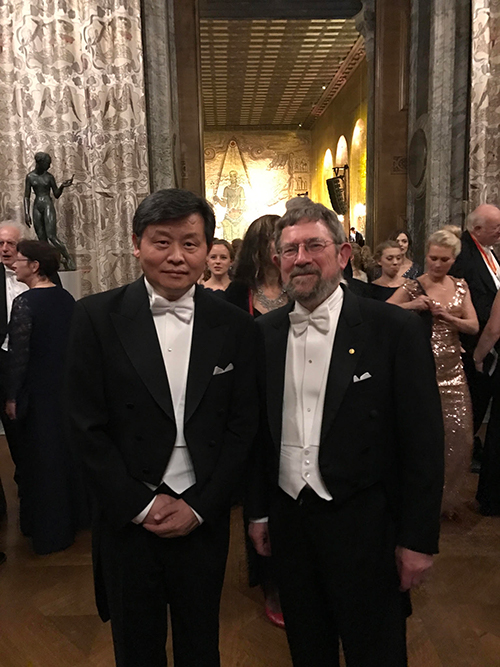Research reveals how material defects influence melting process
In 1972, physicists J. Michael Kosterlitz and David Thouless published a groundbreaking theory of how phase changes could occur in two-dimensional materials. Experiments soon showed that the theory correctly captured the process of a helium film transitioning from a superfluid to a normal fluid, helping to usher in a new era of research on ultra-thin materials, not to mention earning Kosterlitz, a professor at Brown University, and Thouless shares of the 2016 Nobel Prize in Physics.
But the Kosterlitz-Thouless (K-T) theory aimed to explain more than the superfluid transition. The pair also hoped it might explain how a two-dimensional solid could melt into a liquid, but experiments so far have failed to clearly validate the theory in that case. Now, new research by another group of Brown physicists could help explain the mismatch between theory and experiment.
The research, published in Proceedings of the National Academy of Sciences, shows how impurities — “extra” atoms in the crystalline structure of a material — can disrupt the order of a system and cause melting to begin before the K-T theory

predicts it should. The findings are a step toward a more complete physical theory of melting, the researchers say.
“The solid-liquid transition is something we’re all familiar with, yet it’s a profound failure of modern physics that we still don’t understand exactly how it happens,” said Xinsheng Ling, a professor of physics at Brown and senior author of the new paper. “What we showed is that impurities — which are not included in K-T theory but are always found in real materials — play a major role in the melting process.”
While the details remain a major mystery, scientists have a basic understanding of how solids melt. As temperature increases, atoms in the crystalline lattice of a solid start to jiggle around. If the jiggling becomes too violent for the lattice to hold together, the solid melts into a liquid. But how exactly the melting process starts and why it starts in certain places in a solid instead of others aren’t known.
For this new study, the researchers used tiny polystyrene particles suspended in highly deionized water. Electrical forces between the charged particles cause them to arrange themselves in a crystal-like lattice similar to the way atoms are arranged in a solid material. Using a laser beam to move individual particles, the researchers can see how lattice defects affect the order of the lattice.
Defects can come in two general forms — vacancies, where particles are missing, and interstitials, where there are more particles than there should be. This new study looked in particular at the effect of interstitials, which no previous studies had investigated.
The research found that while one interstitial in a given region made little difference in the behavior of the lattice, two interstitials made a big difference.
“What we found was that two interstitial defects break the symmetry of the structure in a way that single defects don’t,” Ling said. “That symmetry-breaking leads to local melting before K-T predicts.”
That’s because the K-T theory deals with defects that arise from thermal fluctuations, and not defects that may have already existed in the lattice.
“Real materials are messy,” Ling said. “There are always impurities. Put simply, the system cannot distinguish which are impurities and which are defects created by thermal agitation, which leads to melting before what would be predicted.”
The technique used for the study could be useful elsewhere, the researchers say. For example, it could be useful in studying the transition of hard glass to a viscous liquid, a phenomenon related to the solid-liquid transition that also lacks a complete explanation.
“We think we have accidentally discovered a new way to uncover symmetry-breaking mechanisms in materials physics,” Ling said. “The method itself may end up being the most significant thing about this paper in addition to the findings.”
Co-authors of the paper were former Brown Ph.D. students Sung-Cheol Kim, Lichao Yu and Alexandros Pertsinidis, who all completed their Ph.D. theses in the Ling Lab at Brown. The research was supported by the National Science Foundation (DMR- 1005705).

